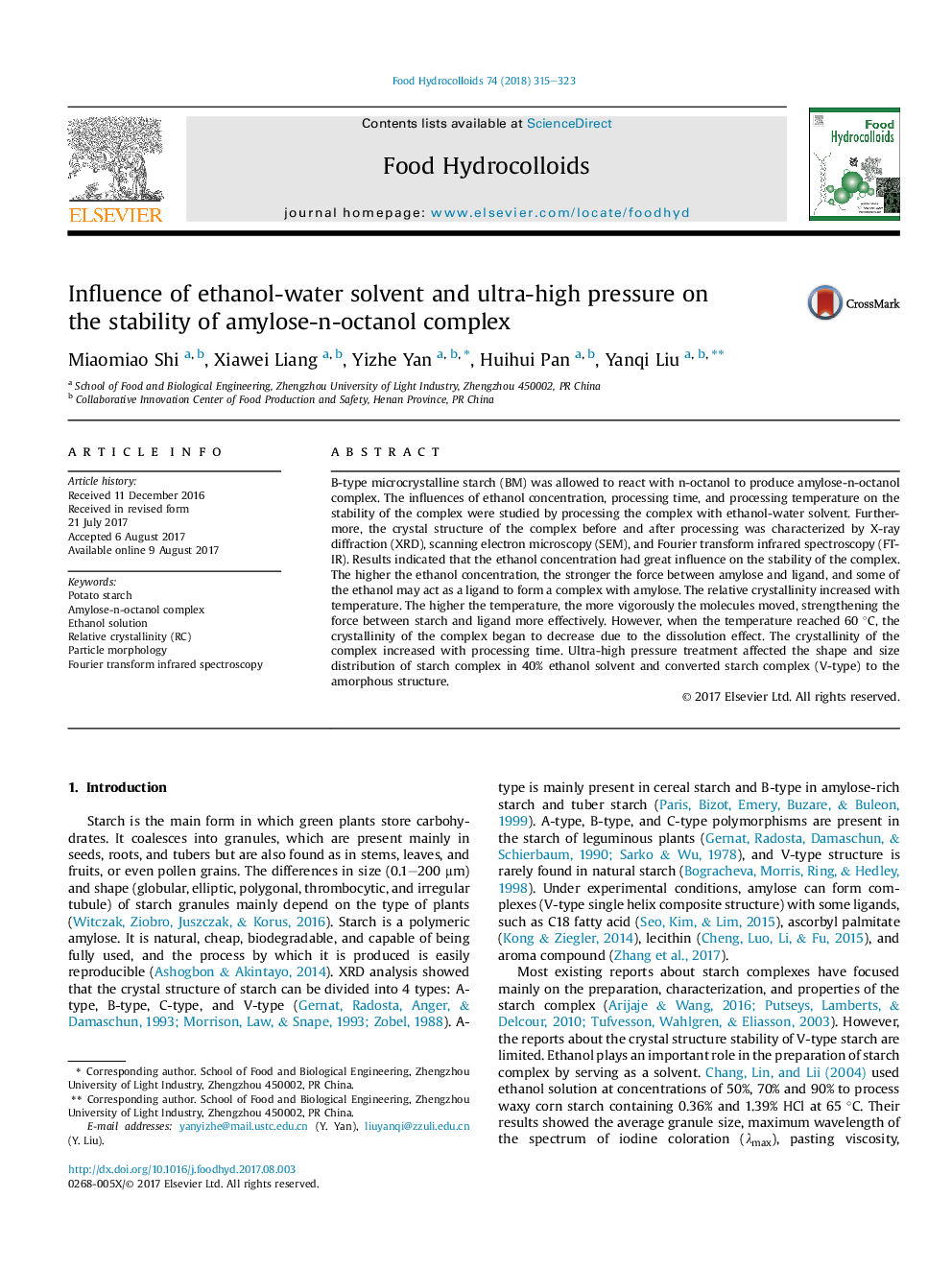| Article ID | Journal | Published Year | Pages | File Type |
|---|---|---|---|---|
| 4983753 | Food Hydrocolloids | 2018 | 9 Pages |
â¢Ethanol had a protective and volume-filling effect on V-type complex.â¢The crystallinity of the V-type complex increased with processing time.â¢The stability of the crystal structure of V-type Complex was discussed.
B-type microcrystalline starch (BM) was allowed to react with n-octanol to produce amylose-n-octanol complex. The influences of ethanol concentration, processing time, and processing temperature on the stability of the complex were studied by processing the complex with ethanol-water solvent. Furthermore, the crystal structure of the complex before and after processing was characterized by X-ray diffraction (XRD), scanning electron microscopy (SEM), and Fourier transform infrared spectroscopy (FT-IR). Results indicated that the ethanol concentration had great influence on the stability of the complex. The higher the ethanol concentration, the stronger the force between amylose and ligand, and some of the ethanol may act as a ligand to form a complex with amylose. The relative crystallinity increased with temperature. The higher the temperature, the more vigorously the molecules moved, strengthening the force between starch and ligand more effectively. However, when the temperature reached 60 °C, the crystallinity of the complex began to decrease due to the dissolution effect. The crystallinity of the complex increased with processing time. Ultra-high pressure treatment affected the shape and size distribution of starch complex in 40% ethanol solvent and converted starch complex (V-type) to the amorphous structure.
Graphical abstractDownload high-res image (394KB)Download full-size image
